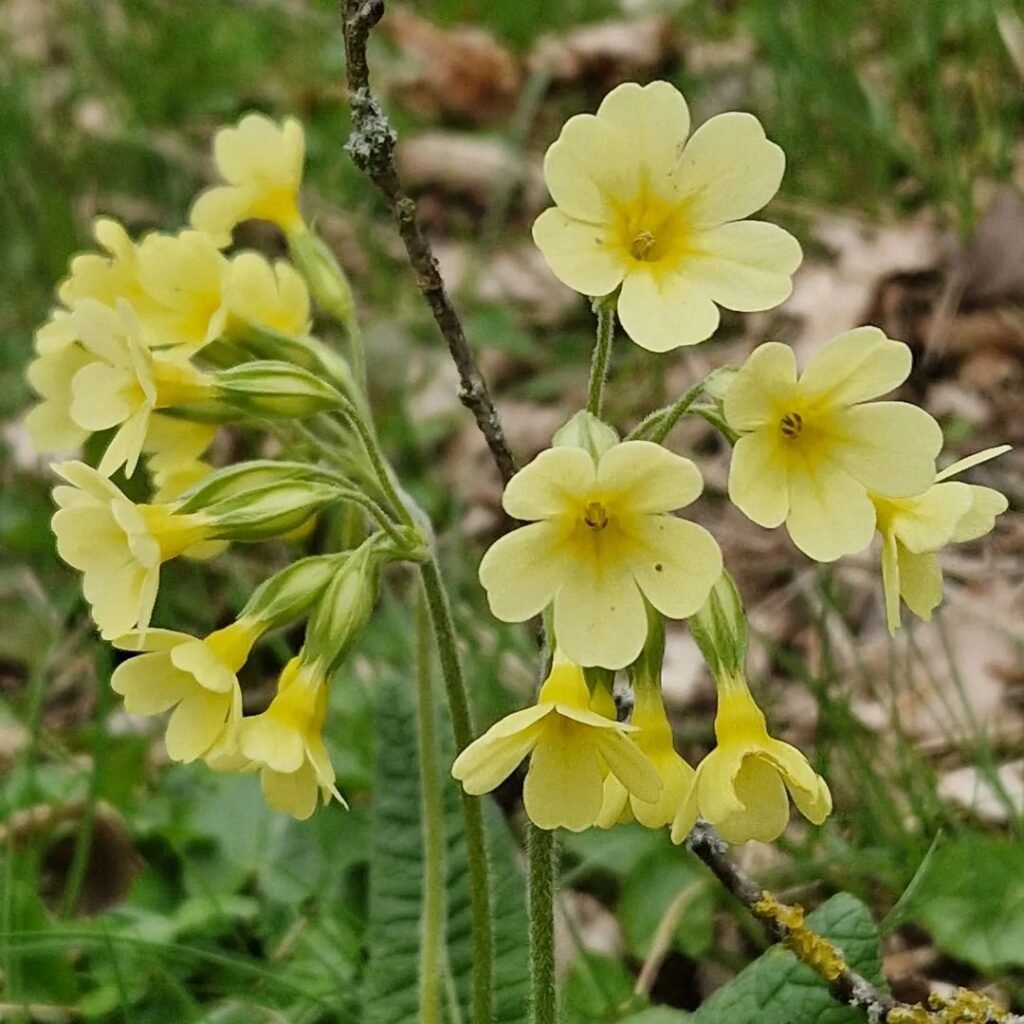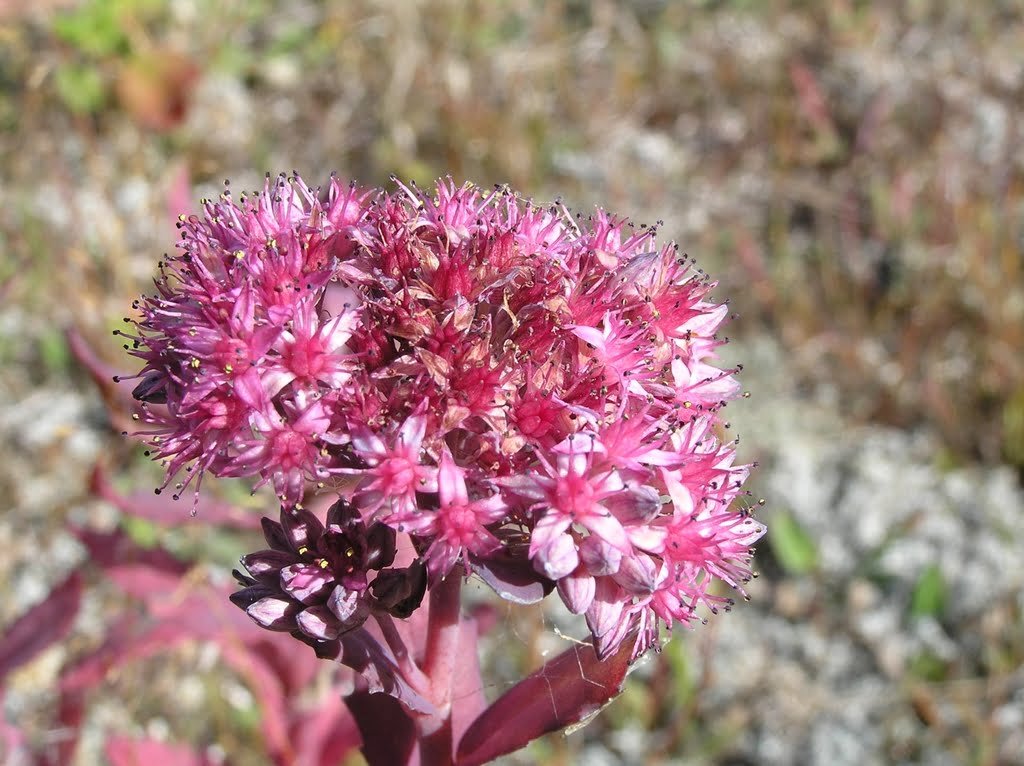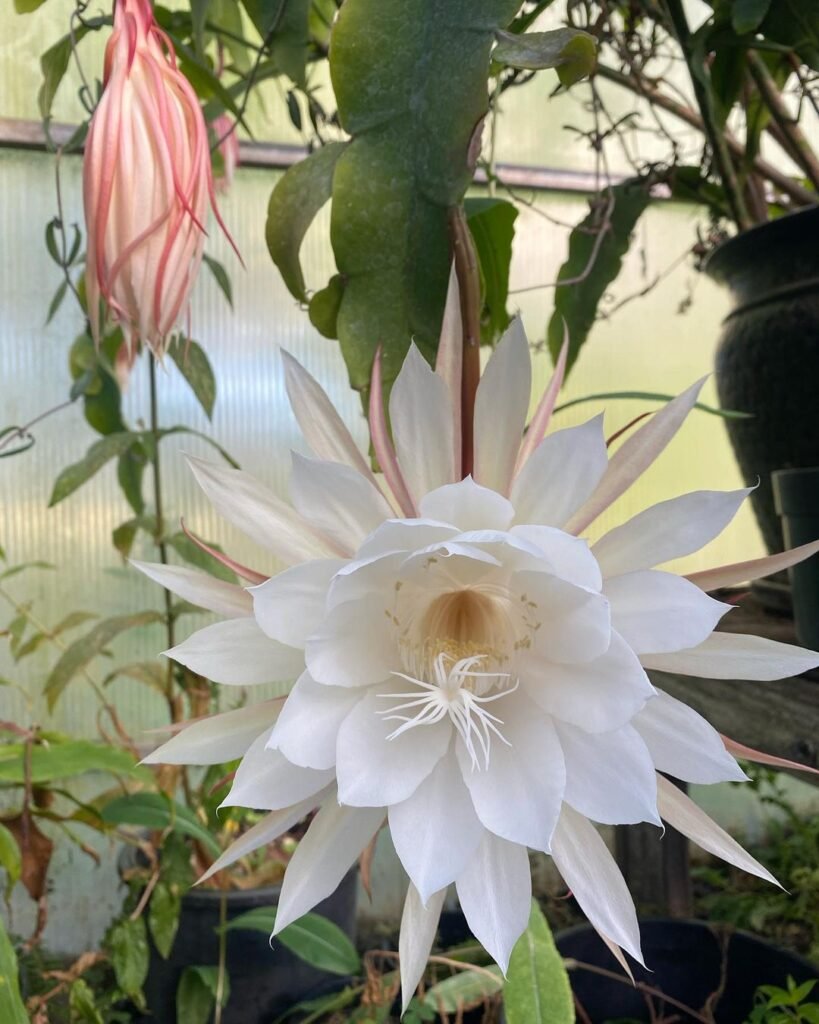Explore the captivating world of 24 beautiful flowers that start with the letter ‘O’. From the regal orchid to the cheerful oxeye daisy, discover their unique characteristics, growing needs, and incredible benefits in this comprehensive guide.
Nature’s floral tapestry is woven with an endless array of colors, shapes, and scents. Among this diverse array, flowers that begin with the letter ‘O’ hold a special allure. From the exotic orchid to the delicate oxlip, these blooms offer a captivating blend of beauty, fragrance, and intrigue. Join us as we embark on a journey through 24 enchanting flowers that start with ‘O’, unveiling their unique characteristics, growing requirements, and remarkable uses.
1. Orchid

- Botanical Name : Orchidaceae
- USDA Growing Zones: Varies by species
- Sun Exposure: Partial shade to bright, indirect light
- Soil Needs: Well-draining, moisture-retentive potting mix
The orchid is a true marvel of nature, renowned for its exotic and intricate blooms. With over 25,000 species, orchids come in a kaleidoscope of colors, shapes, and sizes. These highly prized flowers are not only admired for their beauty but also hold significant cultural and symbolic meanings in various traditions.
2. Oxeye Daisy

- Botanical Name : Leucanthemum vulgare
- USDA Growing Zones: 3-8
- Sun Exposure: Full sun
- Soil Needs: Well-draining, fertile soil
The oxeye daisy is a cheerful and hardy perennial that adds a touch of simple elegance to any garden. Its bright white petals surround a sunny yellow center, creating a classic and timeless look. These easy-to-grow flowers are often found in meadows and fields, and they make excellent additions to wildflower gardens or cutting gardens.
3. Oleander

- Botanical Name : Nerium oleander
- USDA Growing Zones: 8-10
- Sun Exposure: Full sun
- Soil Needs: Well-draining, sandy or loamy soil
The oleander is a striking and resilient shrub known for its clusters of vibrant, funnel-shaped flowers. Available in shades of pink, white, yellow, and red, these blooms are a true showstopper in warm climates. However, it’s important to note that all parts of the oleander plant are highly toxic if ingested.
4. Oxlip

- Botanical Name : Primula elatior
- USDA Growing Zones: 4-8
- Sun Exposure: Partial to full shade
- Soil Needs: Moist, well-draining soil
The oxlip is a delicate and enchanting wildflower that belongs to the primrose family. Its pale yellow, drooping blooms are adorned with a distinct fragrance, adding a touch of whimsy to woodland gardens or shaded areas. These early spring bloomers are beloved for their delicate beauty and ability to naturalize in suitable environments.
5. Osteospermum

- Botanical Name : Osteospermum
- USDA Growing Zones: Annual or perennial in zones 9-11
- Sun Exposure: Full sun
- Soil Needs: Well-draining, fertile soil
Also known as the African daisy, the osteospermum is a vibrant and long-blooming annual or perennial. Its daisy-like flowers come in a stunning array of colors, including purple, pink, white, and yellow, often with contrasting centers. These cheerful blooms are perfect for adding a burst of color to gardens, containers, or hanging baskets.
6. Oriental Poppy

- Botanical Name : Papaver orientale
- USDA Growing Zones: 3-8
- Sun Exposure: Full sun
- Soil Needs: Well-draining, fertile soil
The oriental poppy is a stunning perennial that produces large, bowl-shaped blooms in shades of red, orange, and pink. These magnificent flowers are short-lived but make a bold statement in any garden. Oriental poppies are often used in borders or as focal points, adding drama and vibrancy to the landscape.
7. Orange blossom

- Botanical Name : Citrus × sinensis
- USDA Growing Zones: 9-11
- Sun Exposure: Full sun
- Soil Needs: Well-draining, fertile soil
Is the fragrant flower of the sweet orange tree, beloved for its delicate white petals and intoxicating aroma. These blooms are not only beautiful but also hold significant cultural and symbolic meanings, often used in bridal bouquets and perfumes.
8. Obedient Plant

- Botanical Name : Physostegia virginiana
- USDA Growing Zones: 3-9
- Sun Exposure: Full sun to partial shade
- Soil Needs: Moist, well-draining soil
The obedient plant is an aptly named perennial that gets its moniker from its ability to hold its position when the flowers are gently moved. Its spikes of pink, white, or purple tubular blooms add vertical interest to gardens and are attractive to pollinators like hummingbirds and butterflies.
9. Opal Basswood

- Botanical Name : Tilia x euchlora
- USDA Growing Zones: 3-8
- Sun Exposure: Full sun to partial shade
- Soil Needs: Well-draining, fertile soil
The opal basswood is a deciduous tree that produces clusters of fragrant, cream-colored flowers in early summer. These delicate blooms are a valuable source of nectar for bees and other pollinators, making the opal basswood a great addition to wildlife gardens or natural landscapes.
10. Oswego Tea

- Botanical Name : Monarda didyma
- USDA Growing Zones: 4-9
- Sun Exposure: Full sun to partial shade
- Soil Needs: Moist, well-draining soil
Also known as bee balm, the Oswego tea is a hardy perennial that produces vivid red, pink, or purple flower clusters. These aromatic blooms are highly attractive to pollinators and have a long history of use in herbal teas and remedies. Oswego tea adds a burst of color and fragrance to gardens and makes an excellent addition to pollinator-friendly landscapes.
11. Ostrich Fern

- Botanical Name : Matteuccia struthiopteris (L.) Todaro
- USDA Growing Zones : 2-8
- Sun Exposure: partial to full shade
- Soil Needs: moist, acidic, and rich in organic matter
While not a true flower, the ostrich fern is a stunning perennial known for its distinctive, feather-like fronds that resemble the plumage of an ostrich. This hardy fern thrives in moist, shaded areas and adds a touch of lush greenery and texture to woodland gardens or shaded borders.
12. Oxalis

- Botanical Name : Oxalis
- USDA Growing Zones: 3-7
- Sun Exposure: Partial to full shade
- Soil Needs: Moist, humus-rich soil
The oxalis is a delightful genus of plants that includes both annual and perennial species. These charming flowers often resemble tiny clovers or shamrocks, with delicate blooms in shades of pink, white, yellow, or purple. Oxalis plants are perfect for rock gardens, containers, or as ground covers, adding a touch of whimsy to any outdoor space.
13. Ornithogalum

- Botanical Name : Ornithogalum umbellatum
- USDA Growing Zones: Varies by species
- Sun Exposure: Full sun to partial shade
- Soil Needs: Well-draining soil
Also known as the star-of-Bethlehem, the ornithogalum is a genus of bulbous plants that produce clusters of star-shaped, white or yellow flowers. These delicate blooms add a touch of elegance to gardens and are often used in rock gardens, borders, or naturalized areas.
14. Oncidium

- Botanical Name : Oncidium
- USDA Growing Zones: Varies by species
- Sun Exposure: Full sun to partial shade
- Soil Needs: Well-draining soil
The oncidium is a diverse genus of orchids known for their vibrant, long-lasting flowers. These exotic blooms come in a wide range of colors, patterns, and shapes, making them a favorite among orchid enthusiasts. Oncidiums are often grown as houseplants or in greenhouses, adding a touch of tropical beauty to indoor spaces.
15. Osmanthus

- Botanical Name : Osmanthus
- USDA Growing Zones: 7-10
- Sun Exposure: Full sun to partial shade
- Soil Needs: Well-draining, fertile soil
The osmanthus is a genus of evergreen shrubs or small trees that produce fragrant, white or yellow flowers. These delicate blooms are highly prized for their sweet, apricot-like aroma and are often used in perfumes and teas. Osmanthus plants add a touch of elegance and fragrance to gardens and are well-suited for warm climates.
16. Orpine

- Botanical Name : Hylotelephium telephium
- USDA Growing Zones: 3-9
- Sun Exposure: Full sun to partial shade
- Soil Needs: Well-draining, sandy or gritty soil
The orpine, also known as the stonecrop, is a succulent perennial that produces clusters of pink, yellow, or white star-shaped flowers. These low-maintenance plants are drought-tolerant and perfect for rock gardens, green roofs, or xeriscaping, adding a touch of color and interest to dry or rocky areas.
17. Oxpetalum

- Botanical Name : Epiphyllum oxypetalum
- USDA Growing Zones: 9-11
- Sun Exposure: Full sun to partial shade
- Soil Needs: Well-draining soil
The oxpetalum is a genus of twining vines that produce clusters of small, star-shaped flowers in shades of white, yellow, or purple. These delicate blooms are often fragrant and make excellent additions to hanging baskets, trellises, or arbors, adding a touch of charm and verticality to outdoor spaces.
18. Okra

- Botanical Name : Abelmoschus esculentus L. (Moench)
- USDA Growing Zones: Annual in most regions, perennial in zones 9-11
- Sun Exposure: Full sun
- Soil Needs: Well-draining, fertile soil
While primarily grown for its edible seed pods, the okra plant also produces large, hibiscus-like flowers in shades of yellow or white with a deep red center. These bold blooms add a touch of tropical flair to vegetable gardens and are often used in ornamental landscapes or as cut flowers.
19. Orange Cosmos

- Botanical Name : Cosmos sulphureus
- USDA Growing Zones: Annual
- Sun Exposure: Full sun
- Soil Needs: Well-draining soil
The orange cosmos is a vibrant and easy-to-grow annual that produces masses of cheerful, daisy-like flowers in shades of orange, yellow, and red. These low-maintenance blooms are perfect for adding a burst of color to gardens, meadows, or cutting gardens, and they attract a variety of pollinators.
20. Onosma

- Botanical Name : Onosma
- USDA Growing Zones: Varies by species
- Sun Exposure: Full sun to partial shade
- Soil Needs: Well-draining soil
The onosma is a genus of perennial plants known for their distinctive, tubular flowers that resemble tiny golden trumpets. These unique blooms add a touch of whimsy to rock gardens or drought-tolerant landscapes, and they are often grown for their ornamental value and ability to attract pollinators.
21. Oxbow Sunflower

- Botanical Name : Helianthus curvatus
- USDA Growing Zones: 5-9
- Sun Exposure: Full sun
- Soil Needs: Well-draining, fertile soil
The oxbow sunflower is a unique and eye-catching perennial that produces large, golden-yellow blooms with curved or drooping rays. These stunning flowers add a touch of drama and movement to gardens, and they are perfect for adding height and interest to borders or meadows.
22. Orange Daylily

- Botanical Name : Hemerocallis fulva
- USDA Growing Zones: 3-9
- Sun Exposure: Full sun to partial shade
- Soil Needs: Well-draining soil
The orange daylily is a resilient and low-maintenance perennial that produces vibrant, trumpet-shaped blooms in shades of orange and red. These cheerful flowers are perfect for adding a burst of color to borders, meadows, or naturalized areas, and they are known for their ability to thrive in a variety of growing conditions.
23. Orchid Cactus

- Botanical Name : Epiphyllum oxypetalum
- USDA Growing Zones: 9-11
- Sun Exposure: Bright, indirect light
- Soil Needs: Well-draining, cactus-specific potting mix
The orchid cactus is a unique and exotic plant that produces stunning, flamboyant flowers in a wide range of colors, including red, pink, orange, and white. These remarkable blooms are often fragrant and make excellent additions to indoor spaces or warm, arid gardens.
24. Ovate Catchfly

- Botanical Name : Silene ovata
- USDA Growing Zones: 4-8
- Sun Exposure: Full sun to partial shade
- Soil Needs: Well-draining soil
The ovate catchfly is a charming wildflower that produces clusters of delicate, white or pink blooms with fringed petals. These low-growing plants are often found in meadows or prairies and are perfect for adding a touch of whimsy to rock gardens, wildflower meadows, or naturalized areas.
This captivating journey through 25 flowers that start with the letter ‘O’ has unveiled a diverse array of floral wonders, each with its own unique charm and appeal. From the regal orchid to the cheerful orange cosmos, these blooms offer a delightful mix of colors, forms, and fragrances that can elevate any garden or indoor space. Whether you’re a seasoned gardener or simply appreciate nature’s floral artistry, we hope this guide has inspired you to explore and cultivate these ‘O’ flowers, adding vibrance, beauty, and joy to your surroundings.